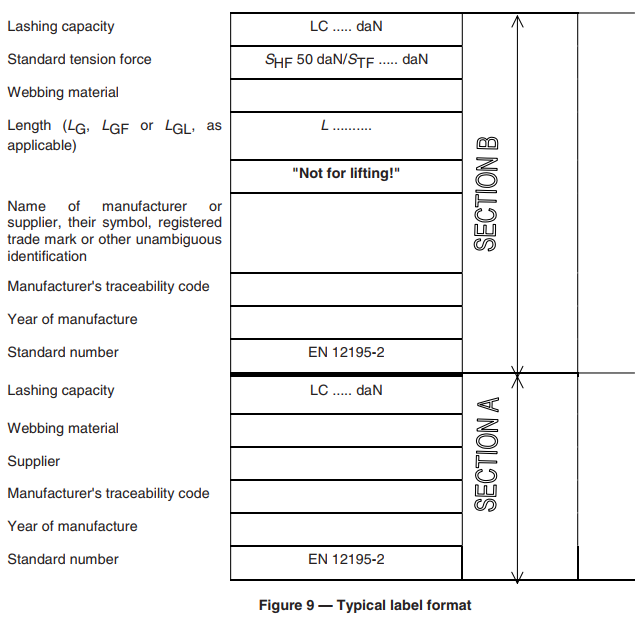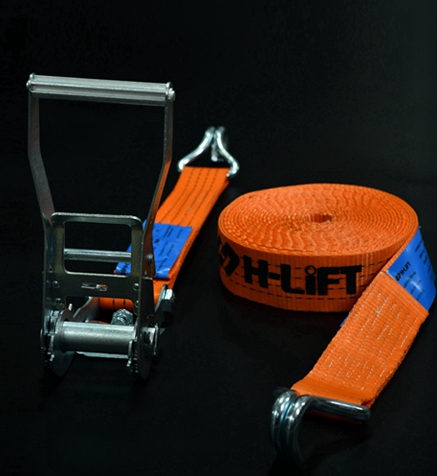Why Ratchet Tie-down Straps Should not be CE Marked ?

Ratchet straps are essential tools for securing loads during transportation, but the presence of a CE mark on these products can be misleading. Let’s delve into why ratchet straps should not be CE marked:
- The CE marking indicates that a product adheres to specific European Union (EU) safety, health, and environmental protection directives.
- However, not every product requires a CE mark. It is directly tied to the mandates issued by the EU for products.
- Ratchet straps fall under the standard BS EN 12195-2:2001, titled “Webbing Lashings.” Interestingly, this standard does not appear on the list of harmonized standards by the European Commission (EC).
- If a product does not conform to a harmonized standard on the EC’s list, it is not obliged to be CE marked.
The Offense of Incorrect CE Marking:
- Marking products with a CE mark when they don’t conform to applicable standards is an offense.
- The CE mark is not just a symbol; it’s a declaration of adherence to specific EU standards.
- Misusing it can have significant consequences.
In summary, ratchet straps do not require a CE mark. Manufacturers and suppliers must stay informed about applicable standards to avoid misleading consumers or committing offenses. Always make safe and knowledgeable decisions based on regulations, not just markings
WHAT INFORMATION CAN BE FOUND ON A RATCHET STRAP LABEL?
Webbing Material
Ratchet tie down straps can be constructed from a range of different materials and this information is usually printed clearly at the top of the cargo label in block capital letters.
However, perhaps an easier way to determine the webbing material of a ratchet strap is to simply note the colour of the label. Most straps are made from polyester and these have a blue label, yet those made from polyamide are green and others made from polypropylene are brown.
Production Date
You should be able to find a date printed somewhere on the label, including a month and year. This is the production date (i.e. the date when your ratchet strap was manufactured) and, in combination with your supplier’s name, it can be used to trace the strap back to its exact production batch.
Lashing Capacity
Lashing capacity (LC) is, essentially, the maximum force your ratchet strap can withstand, without it tearing or damaging in any way. It is usually measured in dekaNewton (daN) and, importantly, it should not be confused with the weight of cargo that your strap can safely restrain.
For example, a LC of 2500 daN does not mean that your strap can restrain 2500kg of cargo. In order to calculate the correct weight, the LC capacity should – in fact – be doubled. A lashing capacity of 2500 daN can, therefore, successfully endure a force equal to 5000kg (or 5 tonnes) in total.
Standard Hand Force
Standard Hand Force (SHF) is the total force that a user can apply to the tensioning device (or ratchet) on your cargo strap – before it would start to damage or break. Once again, this force is measured in daN and the universal standard is currently set at 50daN. This means that a ratchet should only be tightened by hand and not by standing on it or using tools such as a wrench.
Standard Tension Force
Standard tension force (STF) is another measurement that can be found on the label of your cargo ropes. Essentially, it is a measure of the tension (or force) that is created by your ratchet and lashing straps – when tying down a load of cargo – and, once again, it is expressed in terms of daN.
It is important to bear this measurement in mind when loading your cargo, as for straps with a higher STF, fewer straps will be needed, and each strap can be secured a little more tightly.
Total Length and Elongation
The total length of the ratchet load strap should be printed on the label, along with information about its allowed extension. This extension length is expressed as a percentage and in compliance with European standards, it should be no more than 7% of the strap’s total length at LC.
‘Not for lifting’ warning
Your ratchet strap label should also include the statement ‘Not for Lifting!’ in capital letters. This statement is there to remind users that the safety factors for lifting equipment are very different from those of lashing; therefore, under no circumstances, should your straps be used for lifting.
